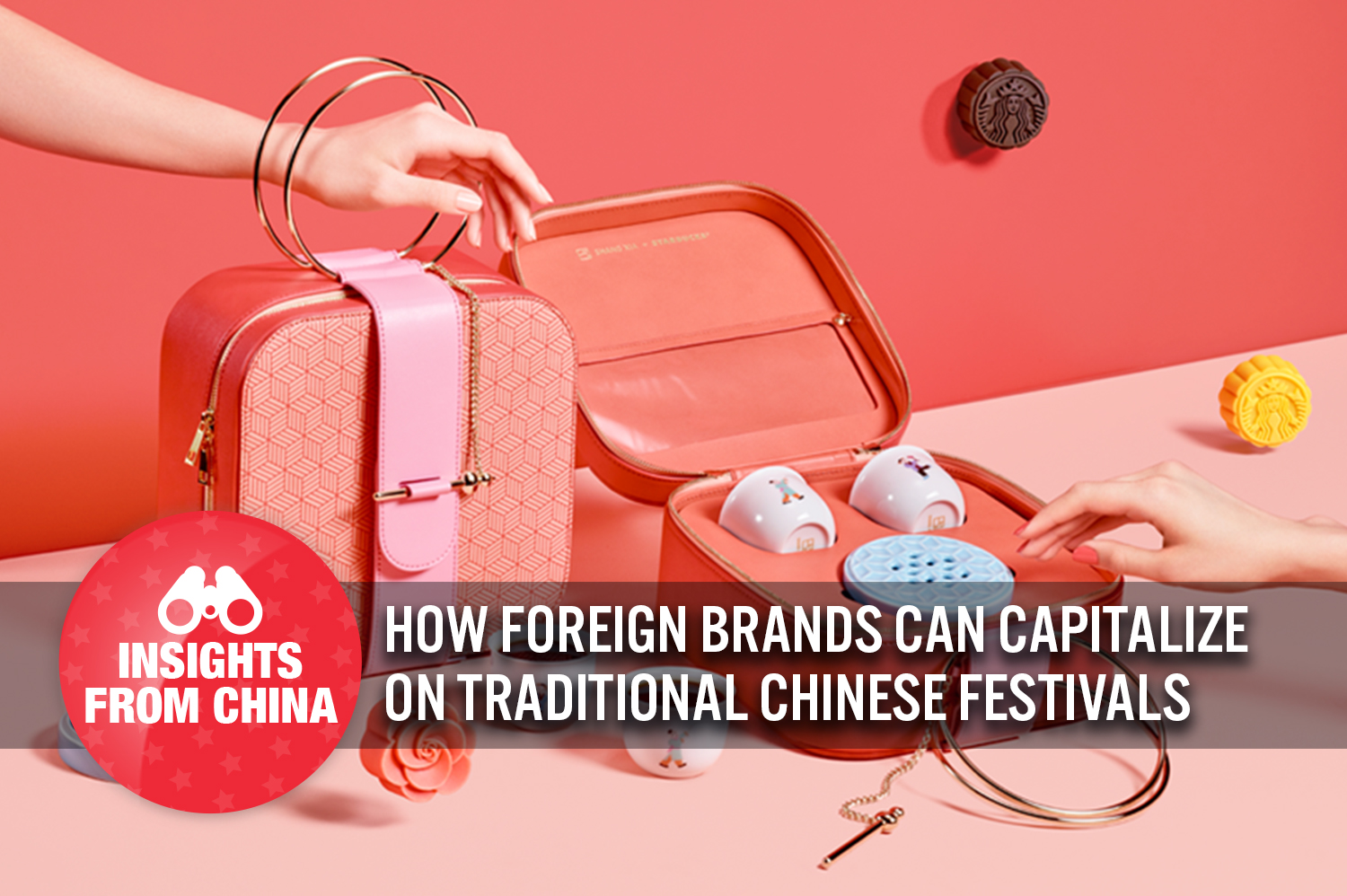
DIpil Das
There are a number of significant festivals in China that are culturally meaningful – many of which offer excellent opportunities for branding or promotions. We look at the opportunity from three major festivals: Spring Festival (Chinese New Year), Chinese Valentine’s Day (Qixi Festival) and the Mid-Autumn Festival.
Chinese New Year
The Spring Festival, commonly referred to as Chinese New Year, is the most important festival of the year in China. Families gather to celebrate in a series of festivities that spread across several days. The holiday marks the start of the lunar year, which normally falls in late January or early February, each year represented by one of the 12 animals from the Chinese zodiac. The coming new year will be the year of the rat, following 2019’s year of the pig. Brands and retailers often incorporate zodiac animals into products and promotions.
Luxury brand Gucci launched its festive themed collection emblazoned with images from the 1933 United Artists’ animated short film “Three Little Pigs,” produced by Walt Disney, as well as its own pig protagonist. The collection consisted of wallets, watches, handbags and sneakers. Not only did the products capture the idea of Chinese New Year, they also showcased the animal in an amusing and engaging manner.
[caption id="attachment_98612" align="aligncenter" width="700"]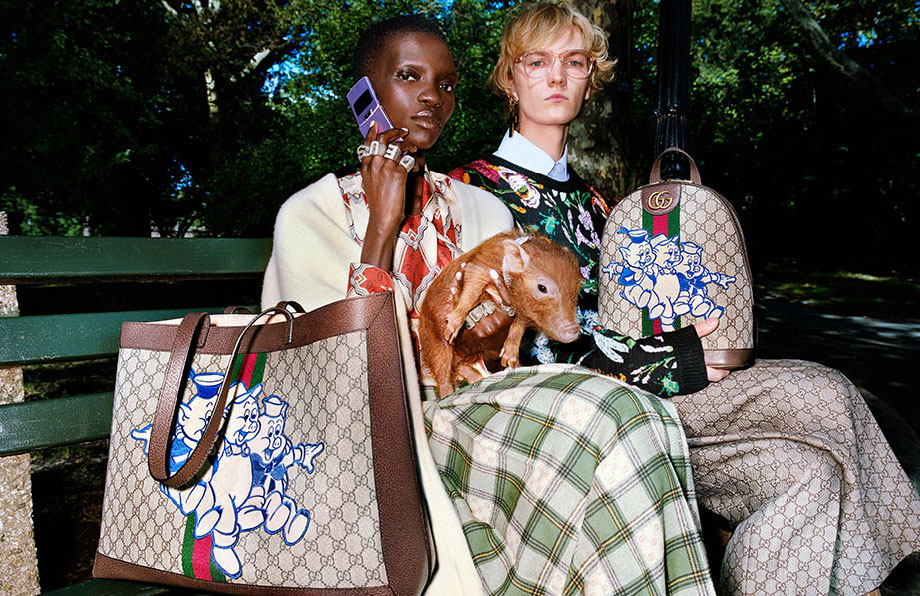 A Gucci tote and backpack feature imagery from the “Three Little Pigs” film
A Gucci tote and backpack feature imagery from the “Three Little Pigs” film
Source: Gucci [/caption] Jewellery brand Pandora encouraged its customers to customize their bracelets with Chinese New Year-themed accessories. Customers can add pigs, dragons, and other trinkets (say, if they were born in the year of the bull, they may opt for a bull trinket). [caption id="attachment_98614" align="aligncenter" width="700"]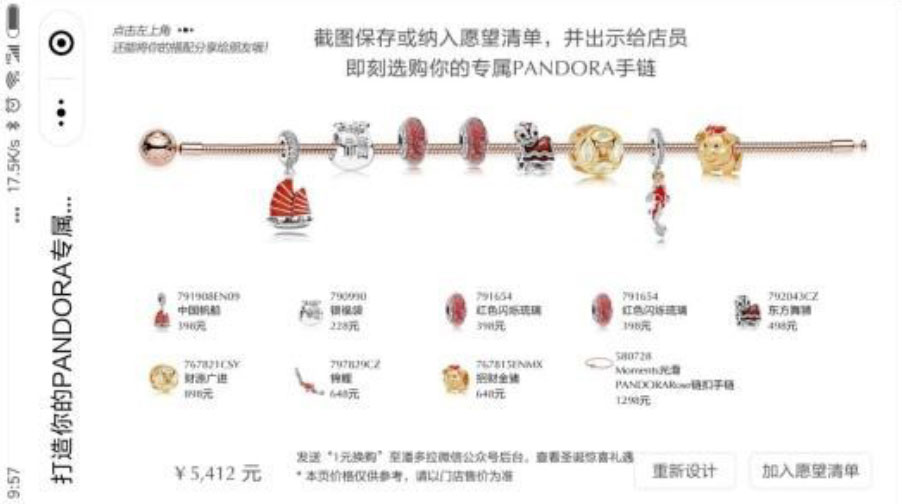 Source: Pandora WeChat Mini-Program[/caption]
US beauty brand Maybelline released a make-up collection that includes a mahjong set (a traditional Chinese tile-based game that is especially popular during the festive season). Maybelline replaced the traditional symbols on the tiles with lipstick, New York City icons – and the Maybelline M logo on the back.
[caption id="attachment_98615" align="aligncenter" width="591"]
Source: Pandora WeChat Mini-Program[/caption]
US beauty brand Maybelline released a make-up collection that includes a mahjong set (a traditional Chinese tile-based game that is especially popular during the festive season). Maybelline replaced the traditional symbols on the tiles with lipstick, New York City icons – and the Maybelline M logo on the back.
[caption id="attachment_98615" align="aligncenter" width="591"]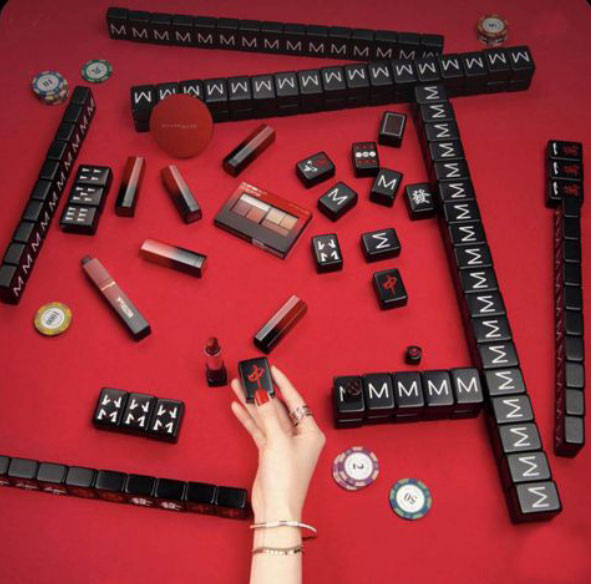 Maybelline’s special edition make-up for Chinese New Year
Maybelline’s special edition make-up for Chinese New Year
Source: Maybelline [/caption] Qixi Festival: China’s Valentine's Day The traditional and most widely recognized Chinese holiday to celebrate love is the Qixi Festival, which falls on the seventh day of the seventh month of the Chinese lunar calendar and so is also sometimes called Double 7. Brands and retailers often introduce products with romantic elements. Tory Burch introduced a capsule collection for the Qixi Festival consisting of four special handbags, a case for business cards (very popular in Asia), the brand’s signature ballet flats in pink and red blocked colors and stripe prints. The collection was modeled by popular Chinese model Liu Wen. [caption id="attachment_98616" align="aligncenter" width="700"] Tory Burch’s special edition bags for the Qixi Festival (left) and Liu Wen modeling the new collection (right)
Tory Burch’s special edition bags for the Qixi Festival (left) and Liu Wen modeling the new collection (right)
Source: Alizila [/caption] Japanese beauty brand Shu Uemura launched a Qixi-themed gift set featuring top-selling items such as lipstick and eyebrow pencil. Opening the gift box, customers first see a rose covering the product below. [caption id="attachment_98617" align="aligncenter" width="700"]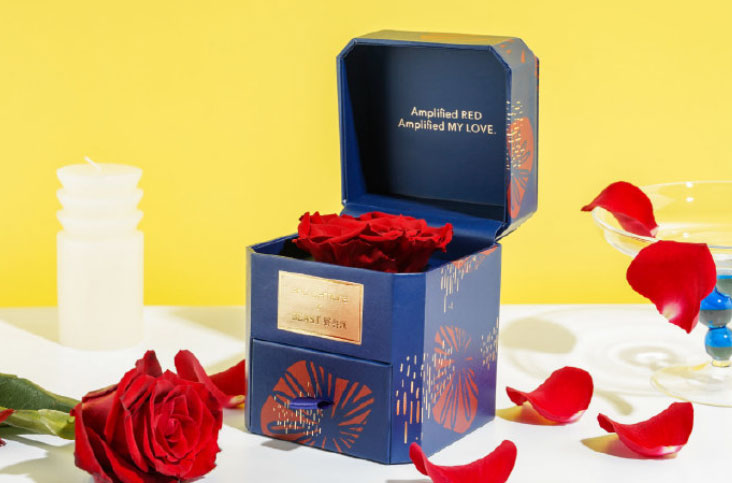 Shu Uemura’s special edition gift box
Shu Uemura’s special edition gift box
Source: Weibo [/caption] Even Budweiser got into the romance game with a limited edition set of four beer bottles, featuring either a man or woman. When two bottles are positioned properly, it appears the two figures are kissing. [caption id="attachment_98618" align="aligncenter" width="544"]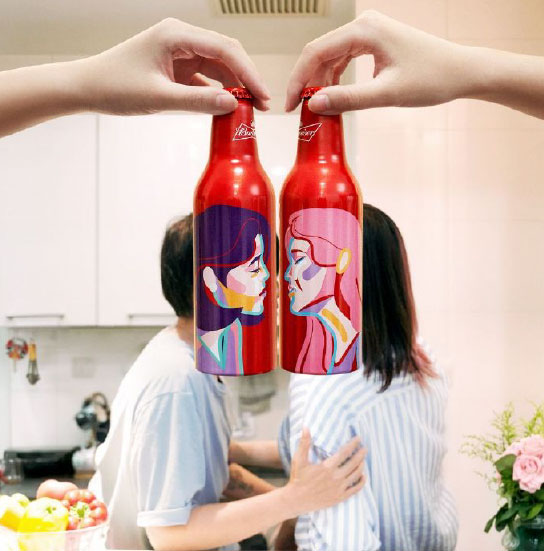 Budweiser’s special edition beer bottles
Budweiser’s special edition beer bottles
Source: Weibo [/caption] Budweiser also launched a campaign film during the Qixi Festival, featuring various real couples talking about love, emphasizing couples from different backgrounds. The couple's faces were covered throughout the film and revealed only at the end of the clip, highlighting that what matters is that the two people are in love. [caption id="attachment_98619" align="aligncenter" width="700"] Budweiser’s Qixi film campaign
Budweiser’s Qixi film campaign
Source: Budweiser [/caption] Mid-Autumn Festival China’s Mid-Autumn Festival is another major holiday during which Chinese families gather, eat festive foods prepared especially for this holiday and enjoy the sight of the full moon, heralding the start of fall. The holiday falls on the 15th day of the eighth month in the Chinese lunar calendar, so it varies each year but this year was on September 13. Some of the innovative marketing approaches we saw included German luxury car giant BMW using its brand name to create an ad slogan that also sounded like a seasonal greeting: “Best Mid-autumn Wishes.” BMW also used a mooncake shaped like the BMW logo in the ad, mooncakes being one of the most identifiable icons of the holiday. [caption id="attachment_98620" align="aligncenter" width="526"]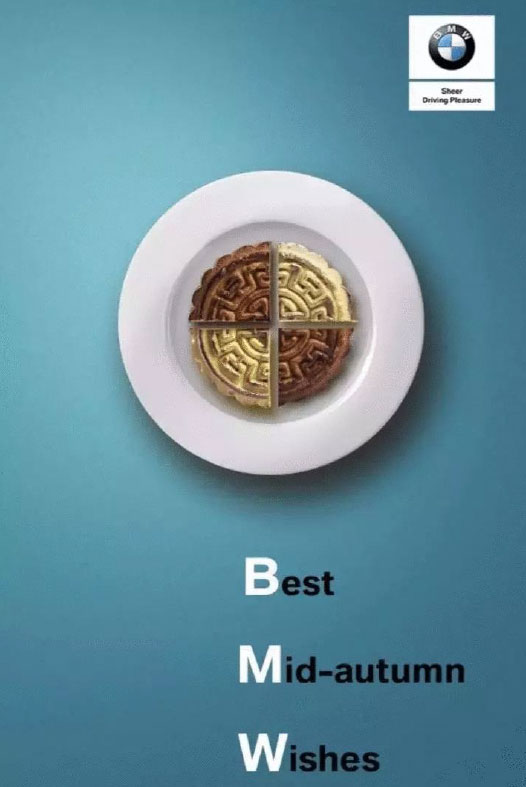 BMW’s Mid-Autumn Festival Ad
BMW’s Mid-Autumn Festival Ad
Source: BMW [/caption] Starbucks China released a collection of Mid-Autumn Festival mugs and bottles with themes such as the dark blue night sky people see when going to look at the full moon (a popular activity) with motifs such as the moon, stars and rabbits. Rabbits are often associated with Mid-Autumn festival, because it is one of the figures in the story of the immortal woman Chang’E, who flew to the moon and separated with her beloved husband on earth on the Mid-Autumn Festival. The rabbit got to accompany Chang’E on the Moon. [caption id="attachment_98621" align="aligncenter" width="700"] Starbucks’ Mid-Autumn Festival themed mugs
Starbucks’ Mid-Autumn Festival themed mugs
Source: Starbucks[/caption] Starbucks also launched a tea set gift box in collaboration with Shang Xia, a Chinese luxury fashion brand backed by Hermès that offers products with a contemporary twist on traditional Chinese aesthetics and crafts. The gift box uses the design of a traditional treasure box, with a bottle gourd-shaped lock. In ancient times, locks symbolize health and wisdom, while the bottle gourd represents happiness and career success. The tea cups go well for the occasion, as families sit together enjoying mooncakes with a cup of tea. What Can Brands and Retailers Do During Traditional Chinese Festivals? To best leverage traditional Chinese festivals, brands can launch holiday-themed products and promotional campaigns to engage consumers, such as the pig Pandora used on its customized Chinese New Year bracelets or Starbuck’s Mid-Autumn Festival moon-themed mugs. Brands and retailers can also include traditional elements not been widely adopted by other brands. Starbucks, for instance, ensured its Mid-Autumn Festival products incorporated meaningful traditional elements such as the treasure box design, the bottle gourd-shaped lock, and tea which can be consumed as an accompaniment to traditional moon cakes. Western brands should also not be bound by their positioning at home and consider new approaches in China, such as Budweiser’s film campaign on love around the Qixi Festival and matching, kissing bottle designs. For more details on specific holidays and dates, see our Key Festivals and Holidays for Promotional Campaigns in China in 2020 calendar.
 A Gucci tote and backpack feature imagery from the “Three Little Pigs” film
A Gucci tote and backpack feature imagery from the “Three Little Pigs” film Source: Gucci [/caption] Jewellery brand Pandora encouraged its customers to customize their bracelets with Chinese New Year-themed accessories. Customers can add pigs, dragons, and other trinkets (say, if they were born in the year of the bull, they may opt for a bull trinket). [caption id="attachment_98614" align="aligncenter" width="700"]
 Source: Pandora WeChat Mini-Program[/caption]
US beauty brand Maybelline released a make-up collection that includes a mahjong set (a traditional Chinese tile-based game that is especially popular during the festive season). Maybelline replaced the traditional symbols on the tiles with lipstick, New York City icons – and the Maybelline M logo on the back.
[caption id="attachment_98615" align="aligncenter" width="591"]
Source: Pandora WeChat Mini-Program[/caption]
US beauty brand Maybelline released a make-up collection that includes a mahjong set (a traditional Chinese tile-based game that is especially popular during the festive season). Maybelline replaced the traditional symbols on the tiles with lipstick, New York City icons – and the Maybelline M logo on the back.
[caption id="attachment_98615" align="aligncenter" width="591"] Maybelline’s special edition make-up for Chinese New Year
Maybelline’s special edition make-up for Chinese New Year Source: Maybelline [/caption] Qixi Festival: China’s Valentine's Day The traditional and most widely recognized Chinese holiday to celebrate love is the Qixi Festival, which falls on the seventh day of the seventh month of the Chinese lunar calendar and so is also sometimes called Double 7. Brands and retailers often introduce products with romantic elements. Tory Burch introduced a capsule collection for the Qixi Festival consisting of four special handbags, a case for business cards (very popular in Asia), the brand’s signature ballet flats in pink and red blocked colors and stripe prints. The collection was modeled by popular Chinese model Liu Wen. [caption id="attachment_98616" align="aligncenter" width="700"]
 Tory Burch’s special edition bags for the Qixi Festival (left) and Liu Wen modeling the new collection (right)
Tory Burch’s special edition bags for the Qixi Festival (left) and Liu Wen modeling the new collection (right) Source: Alizila [/caption] Japanese beauty brand Shu Uemura launched a Qixi-themed gift set featuring top-selling items such as lipstick and eyebrow pencil. Opening the gift box, customers first see a rose covering the product below. [caption id="attachment_98617" align="aligncenter" width="700"]
 Shu Uemura’s special edition gift box
Shu Uemura’s special edition gift box Source: Weibo [/caption] Even Budweiser got into the romance game with a limited edition set of four beer bottles, featuring either a man or woman. When two bottles are positioned properly, it appears the two figures are kissing. [caption id="attachment_98618" align="aligncenter" width="544"]
 Budweiser’s special edition beer bottles
Budweiser’s special edition beer bottles Source: Weibo [/caption] Budweiser also launched a campaign film during the Qixi Festival, featuring various real couples talking about love, emphasizing couples from different backgrounds. The couple's faces were covered throughout the film and revealed only at the end of the clip, highlighting that what matters is that the two people are in love. [caption id="attachment_98619" align="aligncenter" width="700"]
 Budweiser’s Qixi film campaign
Budweiser’s Qixi film campaign Source: Budweiser [/caption] Mid-Autumn Festival China’s Mid-Autumn Festival is another major holiday during which Chinese families gather, eat festive foods prepared especially for this holiday and enjoy the sight of the full moon, heralding the start of fall. The holiday falls on the 15th day of the eighth month in the Chinese lunar calendar, so it varies each year but this year was on September 13. Some of the innovative marketing approaches we saw included German luxury car giant BMW using its brand name to create an ad slogan that also sounded like a seasonal greeting: “Best Mid-autumn Wishes.” BMW also used a mooncake shaped like the BMW logo in the ad, mooncakes being one of the most identifiable icons of the holiday. [caption id="attachment_98620" align="aligncenter" width="526"]
 BMW’s Mid-Autumn Festival Ad
BMW’s Mid-Autumn Festival Ad Source: BMW [/caption] Starbucks China released a collection of Mid-Autumn Festival mugs and bottles with themes such as the dark blue night sky people see when going to look at the full moon (a popular activity) with motifs such as the moon, stars and rabbits. Rabbits are often associated with Mid-Autumn festival, because it is one of the figures in the story of the immortal woman Chang’E, who flew to the moon and separated with her beloved husband on earth on the Mid-Autumn Festival. The rabbit got to accompany Chang’E on the Moon. [caption id="attachment_98621" align="aligncenter" width="700"]
 Starbucks’ Mid-Autumn Festival themed mugs
Starbucks’ Mid-Autumn Festival themed mugs Source: Starbucks[/caption] Starbucks also launched a tea set gift box in collaboration with Shang Xia, a Chinese luxury fashion brand backed by Hermès that offers products with a contemporary twist on traditional Chinese aesthetics and crafts. The gift box uses the design of a traditional treasure box, with a bottle gourd-shaped lock. In ancient times, locks symbolize health and wisdom, while the bottle gourd represents happiness and career success. The tea cups go well for the occasion, as families sit together enjoying mooncakes with a cup of tea. What Can Brands and Retailers Do During Traditional Chinese Festivals? To best leverage traditional Chinese festivals, brands can launch holiday-themed products and promotional campaigns to engage consumers, such as the pig Pandora used on its customized Chinese New Year bracelets or Starbuck’s Mid-Autumn Festival moon-themed mugs. Brands and retailers can also include traditional elements not been widely adopted by other brands. Starbucks, for instance, ensured its Mid-Autumn Festival products incorporated meaningful traditional elements such as the treasure box design, the bottle gourd-shaped lock, and tea which can be consumed as an accompaniment to traditional moon cakes. Western brands should also not be bound by their positioning at home and consider new approaches in China, such as Budweiser’s film campaign on love around the Qixi Festival and matching, kissing bottle designs. For more details on specific holidays and dates, see our Key Festivals and Holidays for Promotional Campaigns in China in 2020 calendar.